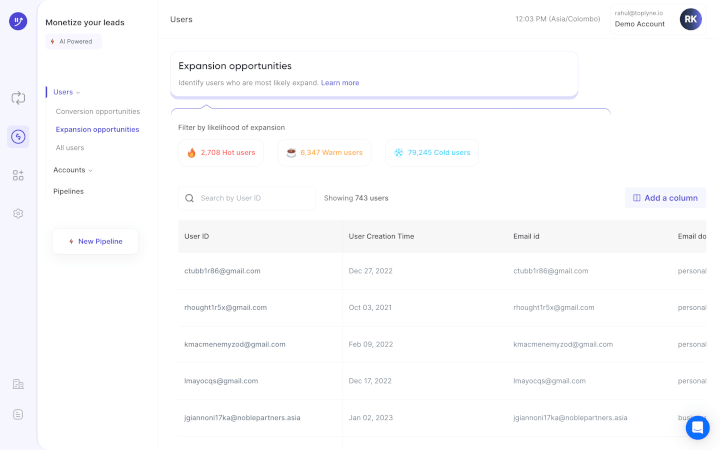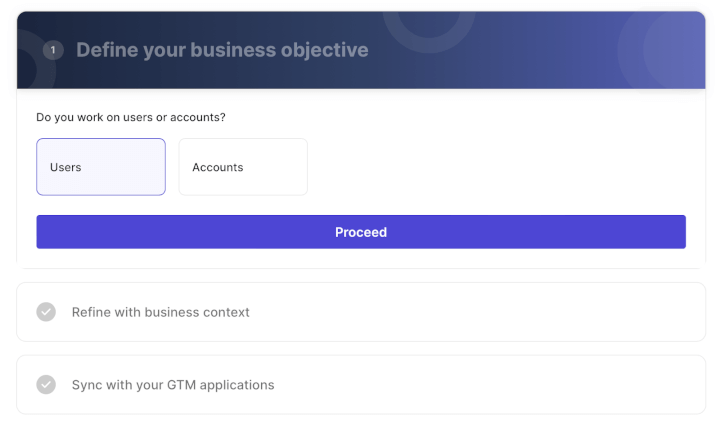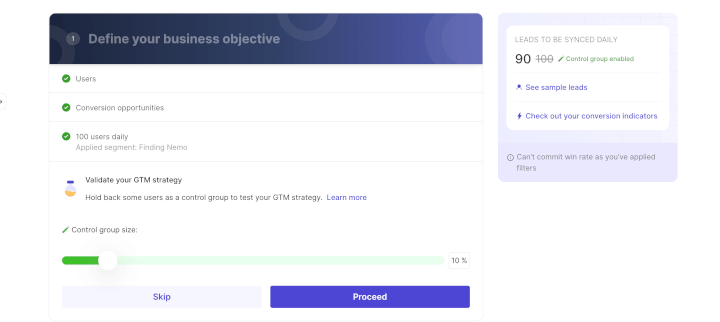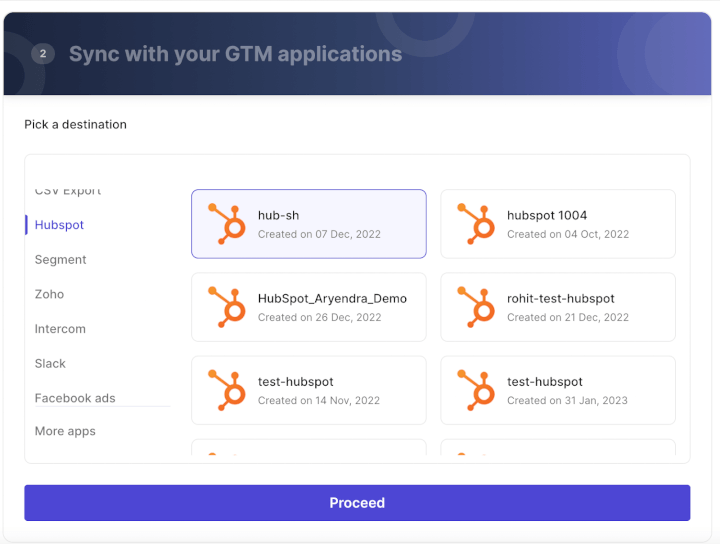What Is Customer Lifetime Value? + How To Boost It

Mirror, mirror on the wall, how can SaaS companies spot the most high-value customers of all?

The answer lies in customer lifetime value (CLV)!
CLV is a metric that helps you acquire and retain high-value customers. By tracking CLV, you’ll know how much you should spend on every customer to get a return on your investment.
In this article, we’ll cover what customer lifetime value is, how to calculate it, and the benefits of tracking it. We’ll also highlight how to boost the metric and the challenges you might face.
We’ll also introduce you to the ultimate customer lifetime value tool that’ll bring you a lifetime of success! 😉
Let’s go!
What Is Customer Lifetime Value?
Customer lifetime value is a business metric that predicts the total money an individual customer will spend on your product throughout the entire business relationship or customer lifespan.
How can you use this?
You can use customer lifetime value to guide important business decisions. For example, you can use it to determine the total revenue you should invest in your customer acquisition strategy.
Or, you can use the metric to determine what customers provide your business the most value and target those unique customers accordingly.
How can your team improve this metric?
Fortunately, you don’t need a magic apple here — your customer service and success teams can boost it along the customer’s journey.

For example, if your customer support team offers proactive support to users, your customer base will likely stay loyal to your brand and spend more money on your product.
Now, let’s find out how to calculate this magical metric. ✨
How to Calculate the Customer Lifetime Value
To calculate customer lifetime value, multiply the customer value (the average value of purchase x the average purchase frequency rate) by the average customer lifespan.
In other words:
CLV = Average value of a purchase x Annual purchase frequency x Average customer lifespan (in years)
Here’s an example of a customer lifetime value calculation:
On average, a customer spends $150 per month on your SaaS product over 2 years.
Then:
CLV = $150 x 12 x 2 = $3,600.
Now, let’s use this number to calculate how much you should invest in acquiring customers.
The CLV to customer acquisition cost (CAC) ratio benchmark for the SaaS industry is any value greater than 3:1.
So, in this case, your customer acquisition cost should amount to, at most, $1,200.
Next, we’ll cover why your sales team needs to track this metric.
Three Benefits of Tracking Customer Lifetime Value
Three note-worthy benefits of tracking CLV are:
1. Segment Customers Based on Value
Customer lifetime value can help you determine your customers’ long-term value and segment them accordingly.
How does this help?
When you know how valuable a particular customer segment is, you can refocus your marketing and sales efforts to create more personal interactions with these high-value customers.
This way, you can improve the customer experience and keep those customers as loyal as the seven dwarfs were to Snow White!

You can also use customer segmentation to acquire new customers with similar backgrounds.
Pro tip: Toplyne automatically segments users for you and suggests the best outreach tactics to get them to convert!
But what about the users with a shorter customer lifespan?
You can nurture less-valuable customers by providing them with helpful content and leveraging upsells and cross-sells to boost their CLV.
2. Evaluate Your Customer Acquisition Cost
Customer lifetime value tells you how much money a current customer will spend on your product over time.
Knowing this can help you determine how much time and money you should spend on acquiring each customer (and whether you’re spending too much).
A good customer lifetime value means you can spend more, while a lower customer lifetime value indicates you can spend less. You should cut back if your acquisition cost is more than a third of your CLV. This way, you ensure you get a good return on your initial investment.
3. Predict Customer Churn Rates
Customers with a good customer lifetime value are less likely to churn (leave your product) since they’ve already achieved success with it.
But watch out for the accounts that received significant discounts.
Why?
According to a study, aggressive discounts (+20%) can decrease CLV by 30%. Moreover, these customers are less likely to upgrade and more likely to churn.
SaaS companies can use this customer data to predict their cash flow and guide their marketing spending and acquisition cycles.
Additionally, knowing which customers are likely to churn means you can proactively prevent these accounts from leaving, improving your retention rate.

You can do this by improving your customer experience, nurturing them, offering incentives, and providing exceptional customer service.
Six Ways to Improve Customer Lifetime Value
The six strategies you can use to skyrocket customer lifetime value are:
1. Optimize the Onboarding Process
When customers know how to derive value from a product and achieve success with it, they’re more likely to stick with it.
Fortunately, you can set your customer base up for success with a practical and comprehensive onboarding process.
Here are a few ways to optimize your onboarding process and improve your customer experience:
- Welcome screen: Welcome your new customer and ask them what they want to achieve with your product. This way, you can give them a personalized product tour related to their goals.
- Visual elements: Ensure your product tour contains videos and screenshots — this will help new users familiarize themselves with your product and improve the customer journey.
- Onboarding checklists: Create a checklist of actionable steps users can take to get to know your product and its most essential features. A checklist helps users reach the “aha!” moment and activate more quickly.
- Native tooltips: Create native tooltips that unfurl when a user hovers over a new feature. This will encourage customers to learn about new features independently.
- Reduce fraction: Avoid lengthy signup forms and surveys that can slow down customer adoption rates and drive customers away.

2. Invest in a Customer Loyalty Program
A customer loyalty program is a customer retention strategy that aims to drive repeat business by offering special deals (discounts and promotions).
These are two popular customer loyalty programs you could use:
- Point-based system: This program encourages customers to complete specific actions in exchange for points. Let’s take a look at Evernote’s point-based system.
Evernote awards users 10 points if they invite a friend to sign up for the tool and accept the invitation. Customers can use the points to try out the premium plan for a certain period — 10 points are worth 3 months.
- Referral program: Referral programs turn every loyal customer into an advocate. With this program, you offer customers additional functionality in exchange for inviting new users.
For example, for every new person invited, Dropbox rewarded users with 500MB of storage. The result? 3900% growth in 15 months!
3. Upsell and Cross-Sell
Upselling entails getting customers to purchase a more expensive plan. On the other hand, cross-selling involves getting customers to spend more by purchasing add-ons.
Examples of upselling:
- Encouraging month-to-month customers to switch to an annual billing cycle (with a slight discount).
- Using marketing automation tools to send a campaign recommending a more comprehensive and expensive package at checkout to a new customer.
Examples of cross-selling:
- Offering users additional functionality like premium support (24/7 live chat) or more integrations for a price.
- Offering new customers add-on products at checkout.
Both strategies aim to increase a user’s average purchase value.
However, it’s often easier to upsell and cross-sell an existing customer since they already trust your product and have achieved success with it.
But you still need to find a way to make the offering sound irresistible.

You can do this by:
- Making the benefits of the offer clear
- Leveraging in-app notifications
- Showcasing premium features in the app
- Offering time-sensitive discounts or deals
4. Leverage Per-Feature Pricing
Per-feature pricing is a popular SaaS pricing model offering unique packages based on product features. The more you pay, the more features you’ll get.
To get this right, you must ensure your basic package contains the essential features that’ll guide users to the “aha!” moment.
Why leverage this pricing model?
With per-feature pricing, customers can immediately see what features they’re paying for and how they can benefit from upgrading, boosting customer satisfaction.
In other words, customers are incentivized to upgrade and can do so whenever they’re ready, allowing them to scale with your product.
5. Ensure Customer Success
A dedicated customer success team and strategy are key to boosting customer lifetime value.
Here are a few ways you can ensure customer success:
- Proactive and personalized customer service: Encourage your customer success team to reach out to customers when they can’t seem to derive value or when they reach a paywall. Moreover, they should include helpful articles and case-specific guides in their email marketing campaigns.
- Comprehensive knowledge base: Create a knowledge base with basic product information, tutorials, and tips. This way, customers can solve their problems independently.
- FAQ doc: Create a document with answers to commonly asked questions so customers can get answers to their questions without contacting customer support.
- Self-service support: Invest in a chatbot that can provide quick answers and solutions to customers. For example, the chatbot can ask the current customer if they want to consult with a sales rep when they’ve reached a paywall.
- Online community: Create a community where customers can interact with other users. This way, customers can benefit from unconstrained amounts of information and get answers and support from real-time users. In other words, the customers have got each other’s backs!

6. Collect Customer Feedback and Act on It
Collecting customer feedback and implementing changes is a powerful way to reduce churn and create more loyal customers.
SaaS companies can do this by having their sales team reach out to unhappy customers.
But how do you know which customers aren’t Happy?

You can look at customers who contact support often. Or you can send out Net Promoter Score (NPS) surveys — a customer satisfaction metric – to find your company’s detractors.
Next, your customer success and support teams should proactively intervene before customers churn.
Why’s this important?
Solving your customers’ pain points and concerns quickly encourages them to stay with your company for longer, boosting their lifetime value.
Three Challenges of Customer Lifetime Value
Here are three major challenges with calculating CLV:
1. It Can Be Challenging to Measure
It can be challenging to calculate CLV without a reliable customer relationship management (CRM) system to provide you with info like average purchase value.
Moreover, predicting future events like customer lifespan can be challenging, especially when the customer is new. And while you could rely on machine learning to predict this customer data, sometimes results can be inaccurate.
2. High-Level Results May Be Misleading
While a company’s total CLV is useful, businesses must look at their CLV at a more granular level — by breaking down data by location, value, size, and more.

This way, sales teams can spot diamond-in-the-rough segments that need more nurturing. Additionally, they can spot an untapped high-value customer segment and target it accordingly.
3. Omits Crucial Information
The CLV formula omits three crucial data points, which can lead to inaccurate data:
- Customer revenue: The formula doesn’t estimate customer revenue and expenses — crucial pieces of the puzzle for determining how much an individual customer will spend.
- Customer retention rate: CLV is based on a stable, unchanging retention rate, which might not be the case for some SaaS companies.
- Special offers: Discounts and special offers are sometimes overlooked while calculating CLV. The problem? The average revenue and, in turn, the CLV will change if a discount is offered for a couple of months.
Have all these drawbacks made you feel Grumpy?
Not to worry — we’ve got a never-before-seen headless sales AI tool that’ll definitely turn that frown upside down!
Toplyne: The Ultimate Tool to Boost Customer Lifetime Value
Toplyne is a headless tool that works in the background to surface a smooth pipeline of high-quality leads.
How does Toplyne do this?
The tool integrates with your existing tech stack, including your product analytics tools (Amplitude, Mixpanel). The tool’s AI monitors customer behavior and then delivers product-qualified leads to your sales team — in the client relationship management tool (HubSpot, Salesforce) of their choice.
Yep, that’s right!
Your sales team can sit back and relax while the tool spots high-value leads!

The result?
- Increased win rates
- Improved NRR (net revenue retention)
- Easily identifiable upselling and cross-selling opportunities
Here’s how companies like Canva and Vercel generate sales pipeline from their self-serve funnel using Toplyne:
- Step 1/7: Create monetization playbooks to surface conversion and expansion opportunities (leads most likely to convert to paying customers, and teams most likely to grow into larger teams)

- Step 2/7: Choose the right leads to target – users (individual users) or accounts (a group of users with an organization).

- Step 3/7: Select the frequency at which you would want leads synced in your GTM apps.

- Step 4/7: Define how many leads you want by either the number of leads or your expected win rate, depending on your sales capacity and GTM strategy.

- Step 5/7: Build custom segments - Build custom segments based on And/Or logic at the deepest level of sub-properties within your product analytics.

- Step 6/7: Validate your GTM strategy - Hold back some users as a control group to test your GTM strategy.

- Step 7/7: Sync your product qualified pipeline into your GTM destinations - CRMs, sales & marketing execution tools, and customer engagement platforms.

Heigh-Ho, Heigh-Ho, a Customer for Life Is Worth More Than Gold!
Customer lifetime value is an essential business metric that sheds light on your most valuable and happy customers. This way, you can develop strategies to keep those high-value customers coming back for more!
Additionally, you can use CLV to spot and nurture low-value accounts and create a customer acquisition strategy that won’t break the bank.
And if you rely on Toplyne, you won’t have to break your brain!
With Toplyne, you’ll have a pipeline of shiny product-qualified leads at your fingertips. And you’ll be able to spot the best conversion and expansion opportunities to boost your CLV.
Sign up for Toplyne for free today to walk away with only the most qualified and valuable leads!



.svg)









.png)